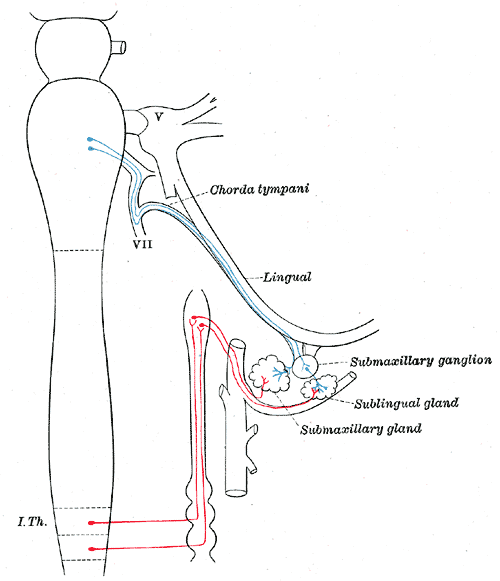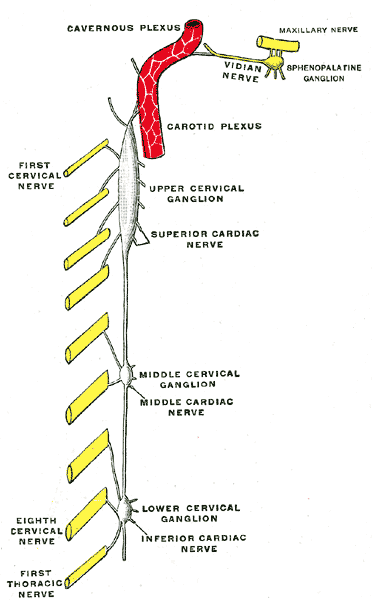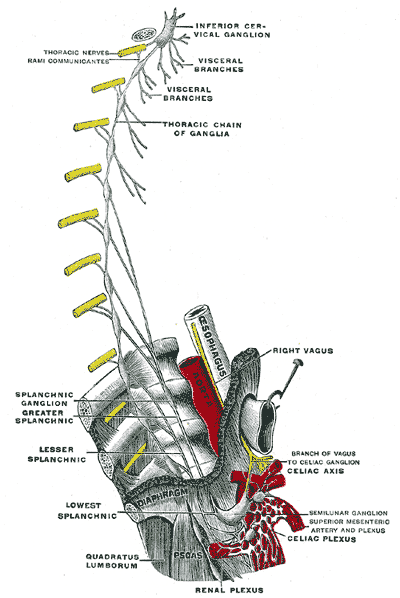[1]
Yokota H, Mukai H, Hattori S, Yamada K, Anzai Y, Uno T. MR Imaging of the Superior Cervical Ganglion and Inferior Ganglion of the Vagus Nerve: Structures That Can Mimic Pathologic Retropharyngeal Lymph Nodes. AJNR. American journal of neuroradiology. 2018 Jan:39(1):170-176. doi: 10.3174/ajnr.A5434. Epub 2017 Nov 9
[PubMed PMID: 29122764]
[2]
Mitsuoka K, Kikutani T, Sato I. Morphological relationship between the superior cervical ganglion and cervical nerves in Japanese cadaver donors. Brain and behavior. 2017 Feb:7(2):e00619. doi: 10.1002/brb3.619. Epub 2016 Dec 29
[PubMed PMID: 28239529]
[3]
Loke SC, Karandikar A, Ravanelli M, Farina D, Goh JP, Ling EA, Maroldi R, Tan TY. Superior cervical ganglion mimicking retropharyngeal adenopathy in head and neck cancer patients: MRI features with anatomic, histologic, and surgical correlation. Neuroradiology. 2016 Jan:58(1):45-50. doi: 10.1007/s00234-015-1598-1. Epub 2015 Sep 30
[PubMed PMID: 26423907]
[4]
Fazliogullari Z, Kilic C, Karabulut AK, Yazar F. A morphometric analysis of the superior cervical ganglion and its surrounding structures. Surgical and radiologic anatomy : SRA. 2016 Apr:38(3):299-302. doi: 10.1007/s00276-015-1551-3. Epub 2015 Sep 12
[PubMed PMID: 26364034]
[5]
Moriyama H, Shimada K, Goto N. Morphometric analysis of neurons in ganglia: geniculate, submandibular, cervical spinal and superior cervical. Okajimas folia anatomica Japonica. 1995 Oct:72(4):185-90
[PubMed PMID: 8570139]
[6]
Rusu MC, Pop F. The anatomy of the sympathetic pathway through the pterygopalatine fossa in humans. Annals of anatomy = Anatomischer Anzeiger : official organ of the Anatomische Gesellschaft. 2010 Feb 20:192(1):17-22. doi: 10.1016/j.aanat.2009.10.003. Epub 2009 Nov 5
[PubMed PMID: 19939656]
[7]
Kameda Y, Saitoh T, Nemoto N, Katoh T, Iseki S. Hes1 is required for the development of the superior cervical ganglion of sympathetic trunk and the carotid body. Developmental dynamics : an official publication of the American Association of Anatomists. 2012 Aug:241(8):1289-300. doi: 10.1002/dvdy.23819. Epub 2012 Jun 22
[PubMed PMID: 22689348]
[8]
Tubbs RS, Salter G, Wellons JC 3rd, Oakes WJ. Blood supply of the human cervical sympathetic chain and ganglia. European journal of morphology. 2002 Dec:40(5):283-8
[PubMed PMID: 15101443]
[12]
Siegenthaler A, Haug M, Eichenberger U, Suter MR, Moriggl B. Block of the superior cervical ganglion, description of a novel ultrasound-guided technique in human cadavers. Pain medicine (Malden, Mass.). 2013 May:14(5):646-9. doi: 10.1111/pme.12061. Epub 2013 Feb 25
[PubMed PMID: 23438374]




